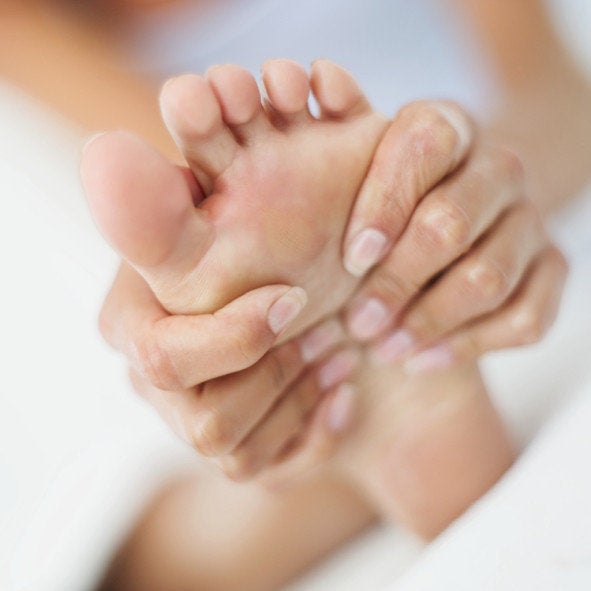
In the world of foot problems, there are many repetitive stress and traumatic injuries that affect connective tissues (ligaments and tendons). These conditions can be responsible for chronic pain and disability in many patients. Due to the extreme forces that affect the foot, healing in many of these conditions may be inefficient and incomplete, leaving the patient to suffer in chronic pain. Conditions such as plantar fasciitis, achilles tendonitis, posterior tibial tendonitis, peroneal tendonitis, repetitive ankle sprains as well as ligament and tendon tears are commonly found to be chronic sources of pain and disability in many patients.
Since connective tissue has no direct arterial supply and relies on microscopic circulation for the delivery of nutrients and oxygen required for healing, this puts these conditions at a distinct disadvantage in terms of the turnover time for cells to heal or be replaced by new cells.
In the foot, as in all other areas of the body, when healing is incomplete, the immune system will default into chronic inflammation as a means to protect the injured cells. This is the pathway that attempts to prevent further damage to the injured tendon or ligament, but is not the pathway needed for repair of the injured tissue. The pathway that is needed, known as primary inflammation, is the pathway that activates a cascade of events designed to detoxify and repair the injured cells.
There are many reasons why many patients do not properly heal in spite of medical therapies. Some of these issues may be a burdened immune system from a) a poor diet resulting in lack of essential nutrients needed for proper healing, b) food sensitivities that misdirect the immune system, c) digestive disorders that leave the GI tract chronically inflamed, hence preventing genesis of short chain fatty acids needed to feed the immune system, d) therapies that do not enhance microscopic blood flow, e) cortisone injections that weaken connective tissue, f) non-steroidal anti-inflammatory drugs that suppress the primary inflammatory response, g) adrenal dysfunction from chronic stress that directly inhibits immune system efficiency, h) heavy metal poisoning and many others.
Once these burdens are identified and lifted, provoking primary inflammation is often the best way to facilitate healing in these chronic problems. This means we get to support the body's natural pathway of healing. In my experience, supporting, rather than suppressing primary inflammation, will foster healing of tissues, even when they have been chronically inflamed and painful for years.
One excellent way to accomplish this is through the use of the patient's own platelets. The technique we use is called platelet-rich plasma injections (PRP). These injections contain high amounts of concentrated platelets, which are very rich in bioactive proteins, including growth factors that are needed for the repair of cells. When tissues are injured, platelets migrate to the area to minimize bleeding and to deposit these growth factors in the area to stimulate healing. PRP is a great way to improve outcome by taking what nature does and making it more efficient.
The technique is fairly simple. A vial of blood is drawn from the patient and placed in a special centrifuge that is capable of separating platelets from the other formed blood cells. The platelet-rich plasma is then injected into the area of pathology, (usually under ultrasound guidance to insure correct placement of the platelets) and this concentrated solution of platelets is often able to substantially increase the primary inflammatory response by mimicking injury.
After the injection, we restrict the use of the foot/ankle by placing it in an immobilizing walking boot. This decreases stress on the area we are trying to heal, thus making it more likely that we will be able to see the results we are looking for. There is sometimes a fair amount of post-injection pain brought about by the temporary increase in inflammation, but it is well worth the discomfort when we can heal tissues that have been chronically painful for long periods of time.
Some patients will require more than one treatment, however, the prognosis improves dramatically when the immune burdens we spoke about previously have been dealt with prior to the procedure.
It is a very safe procedure. Since we are using the patient's own platelets, allergic reactions are avoided. My experience with platelet-rich plasma for foot and ankle problems has been very good for a myriad of problems commonly seen in a podiatry office.